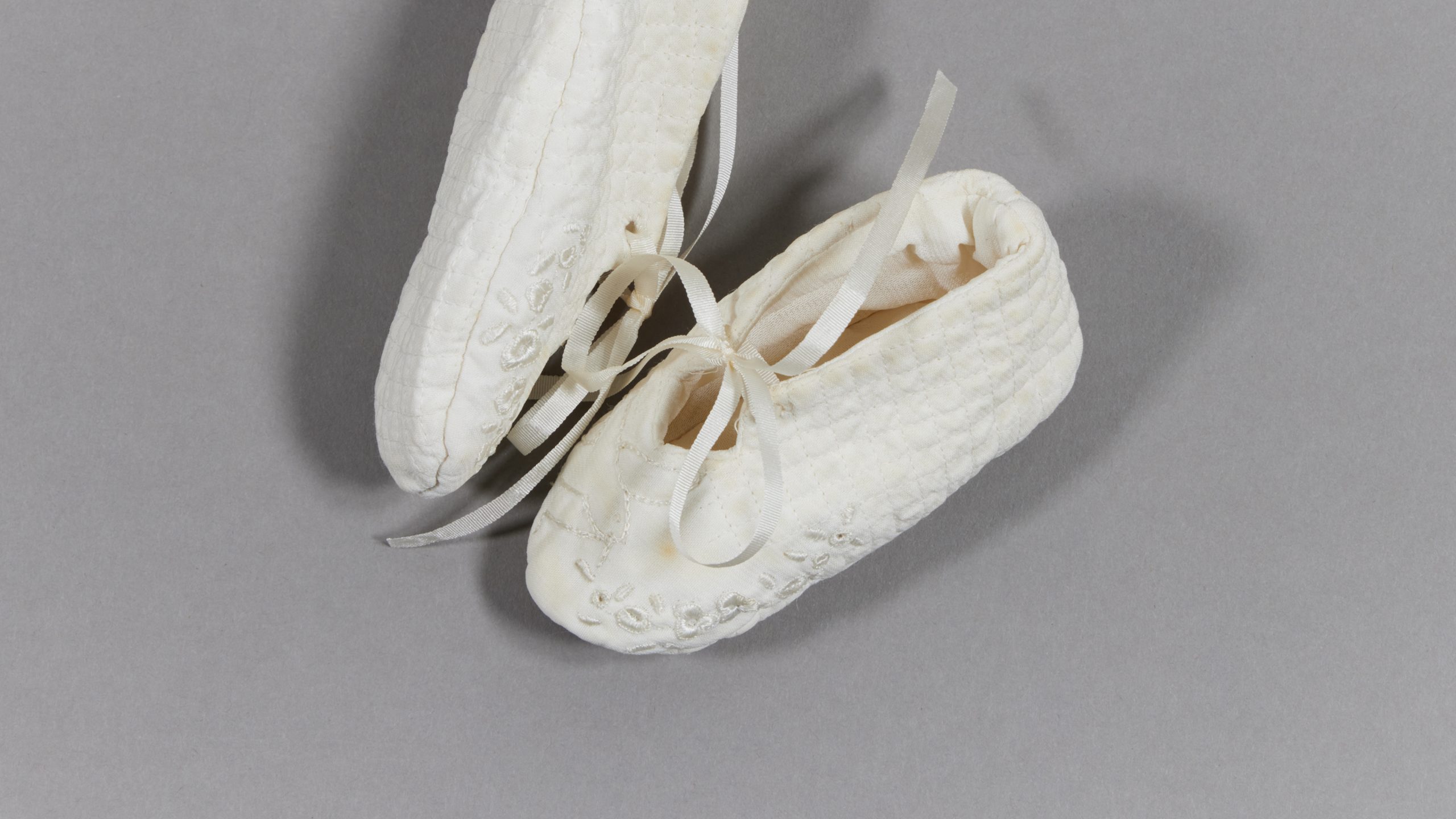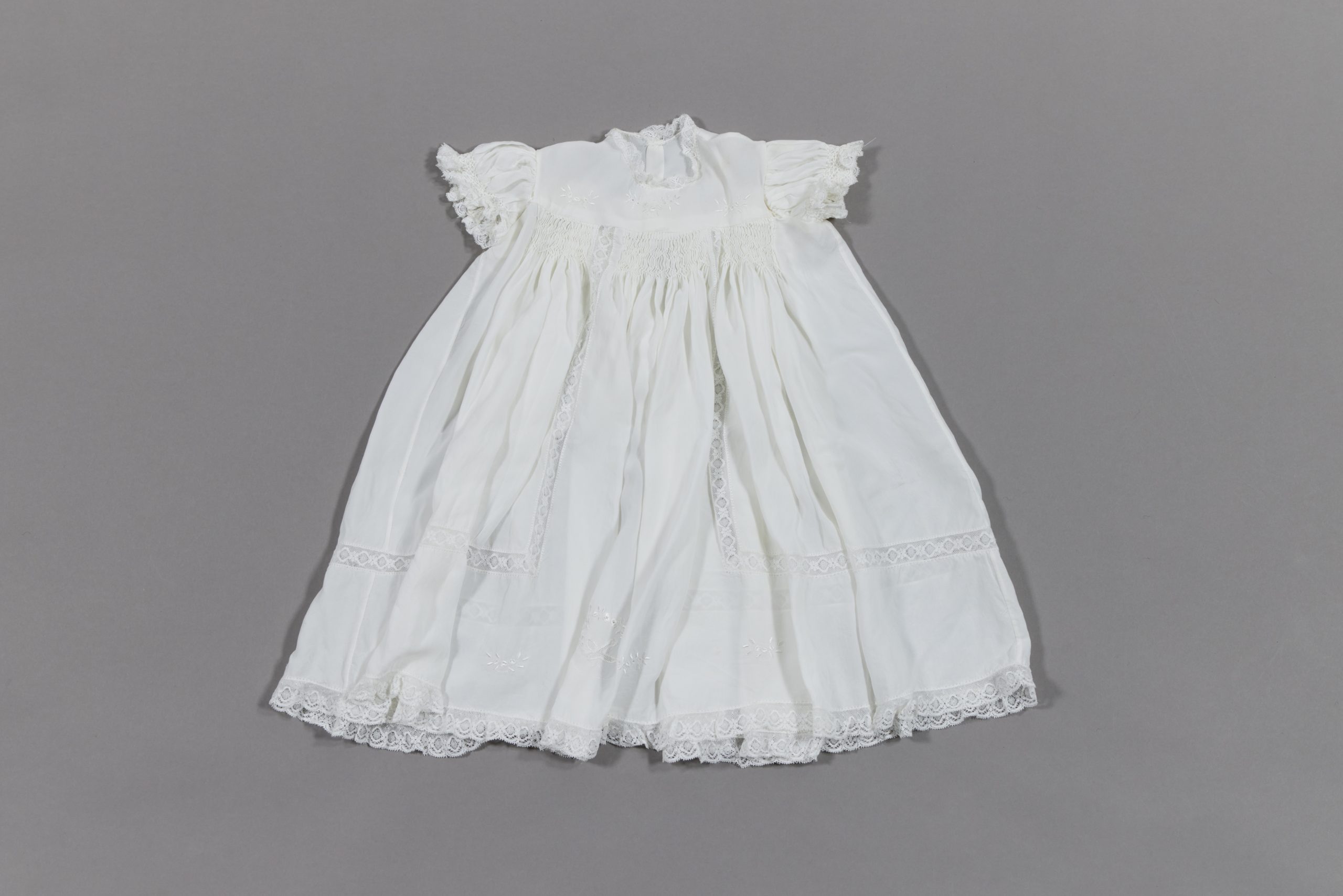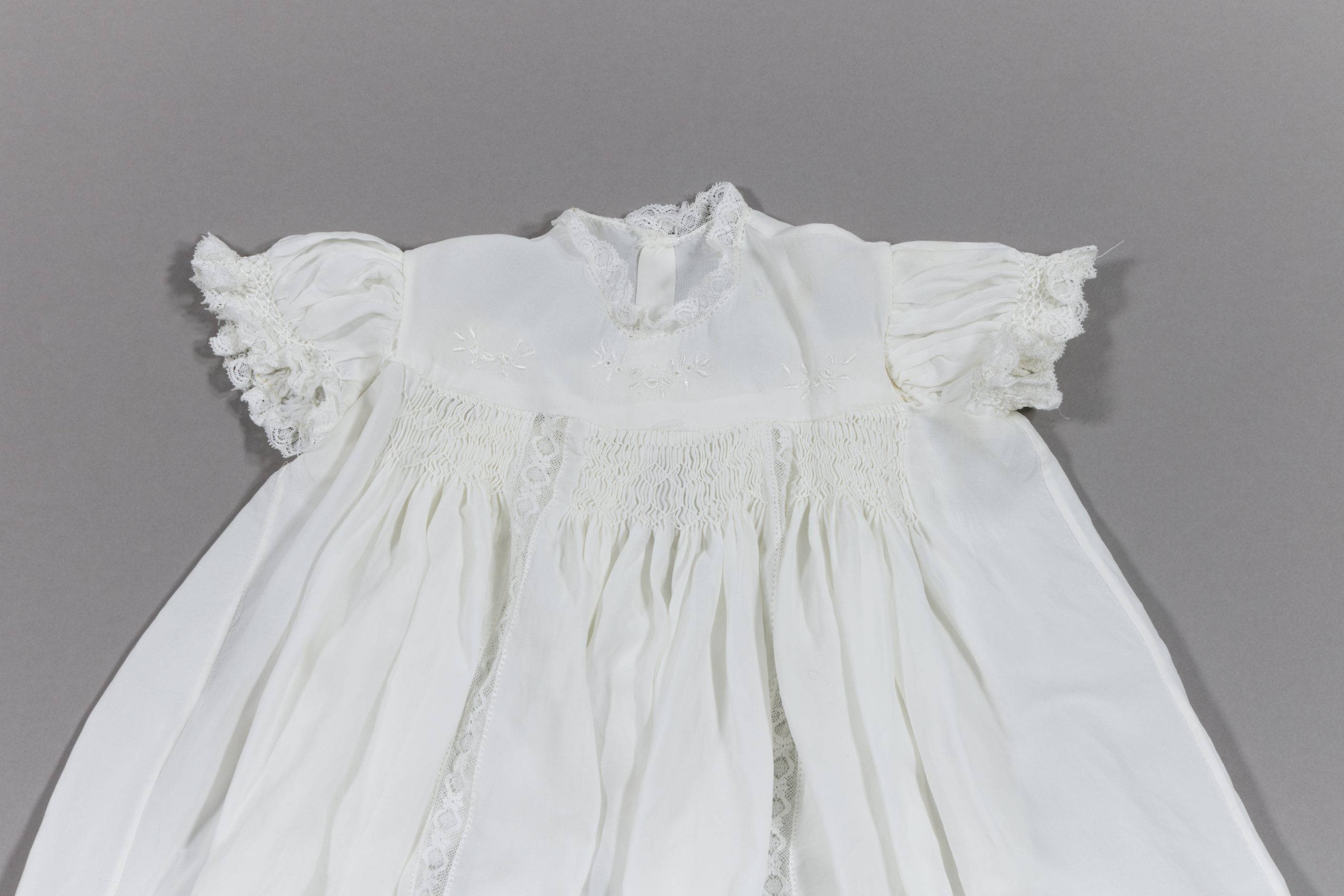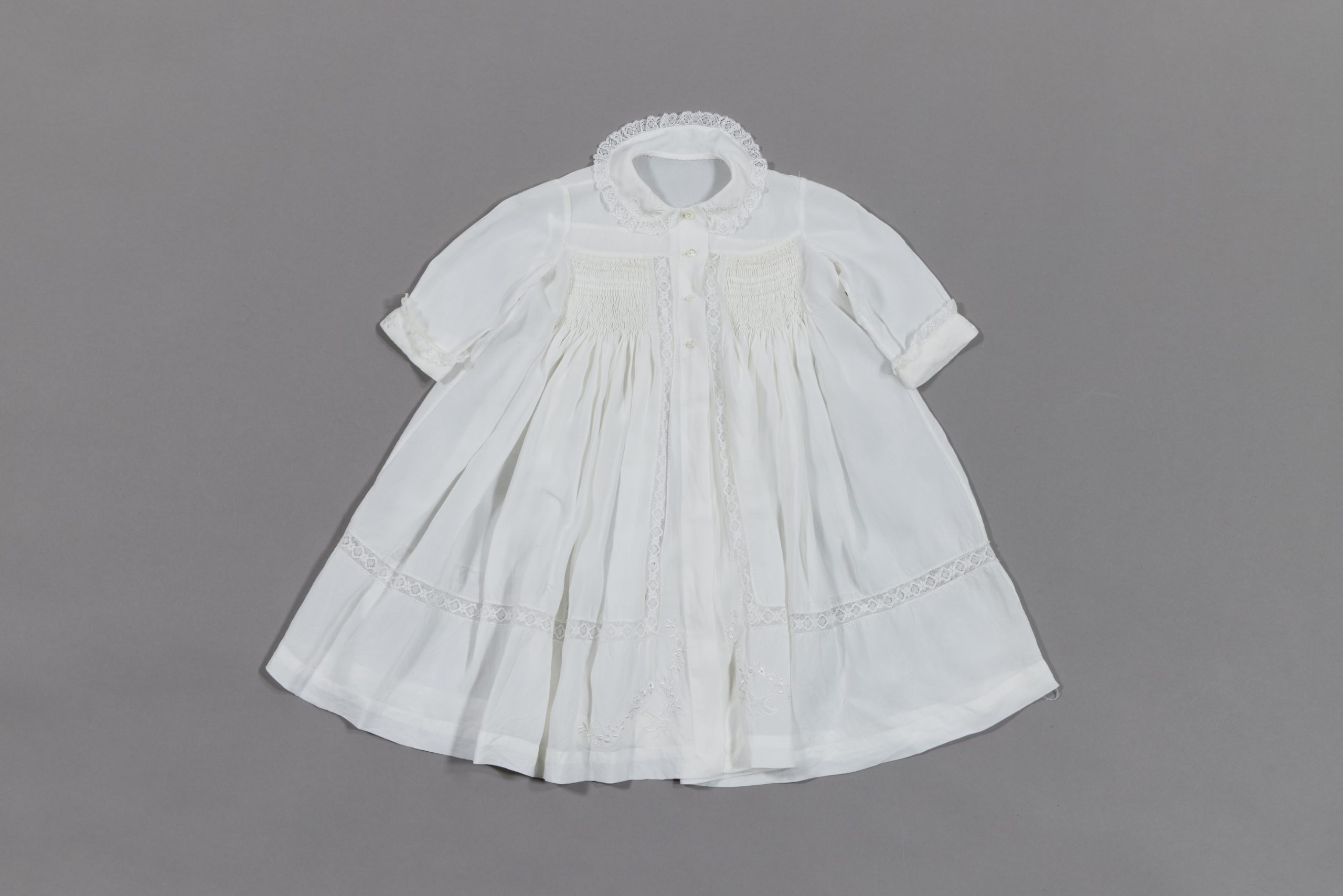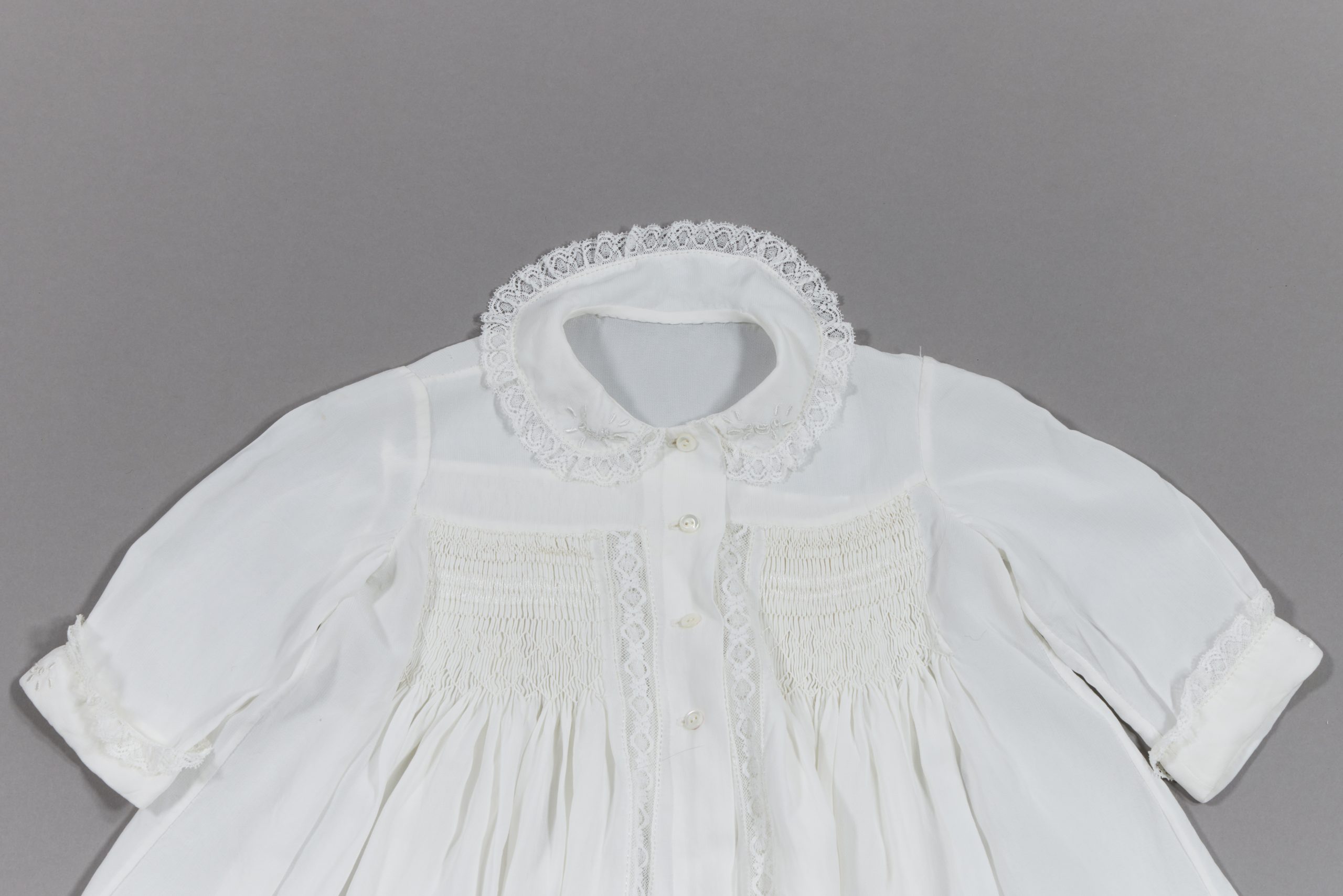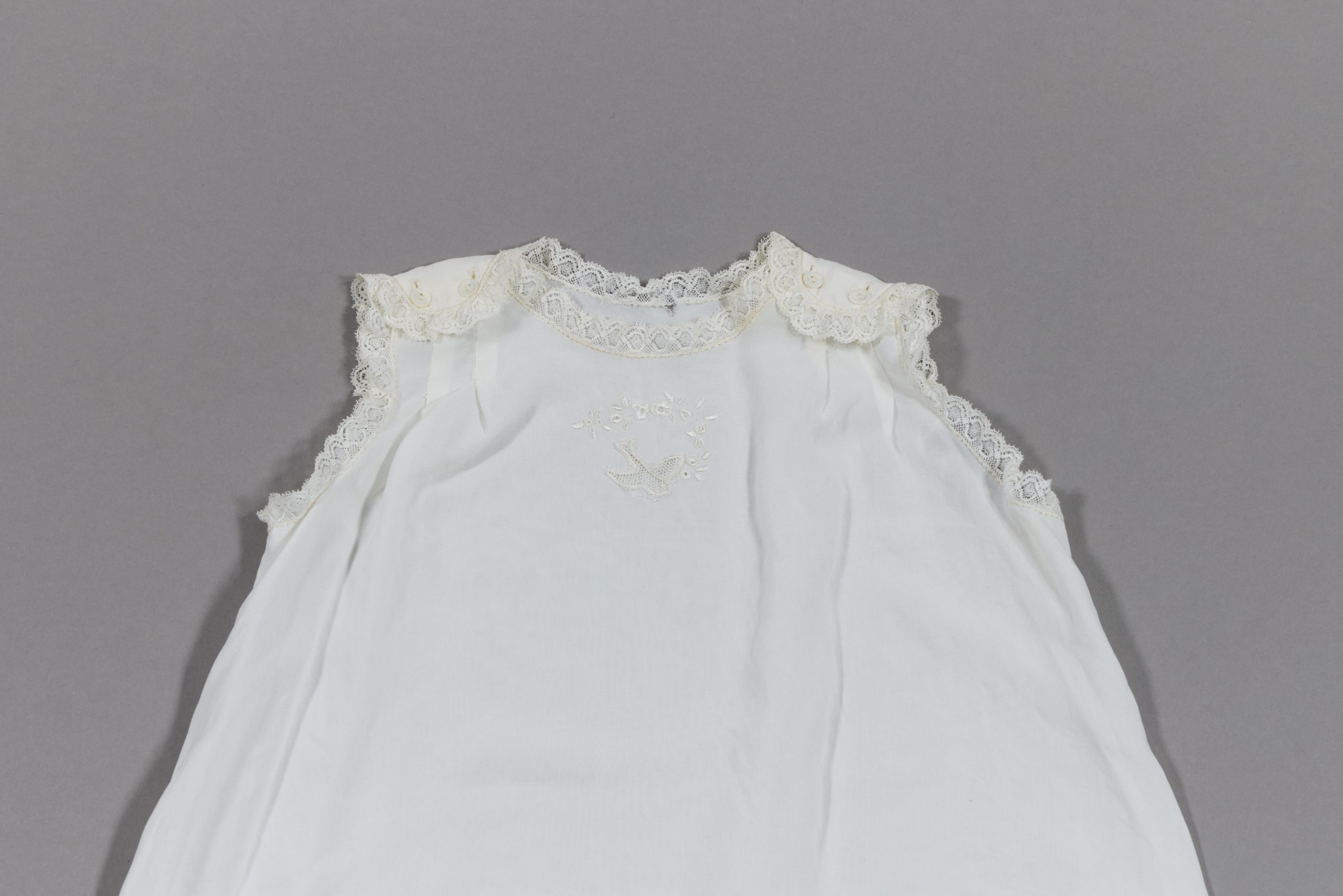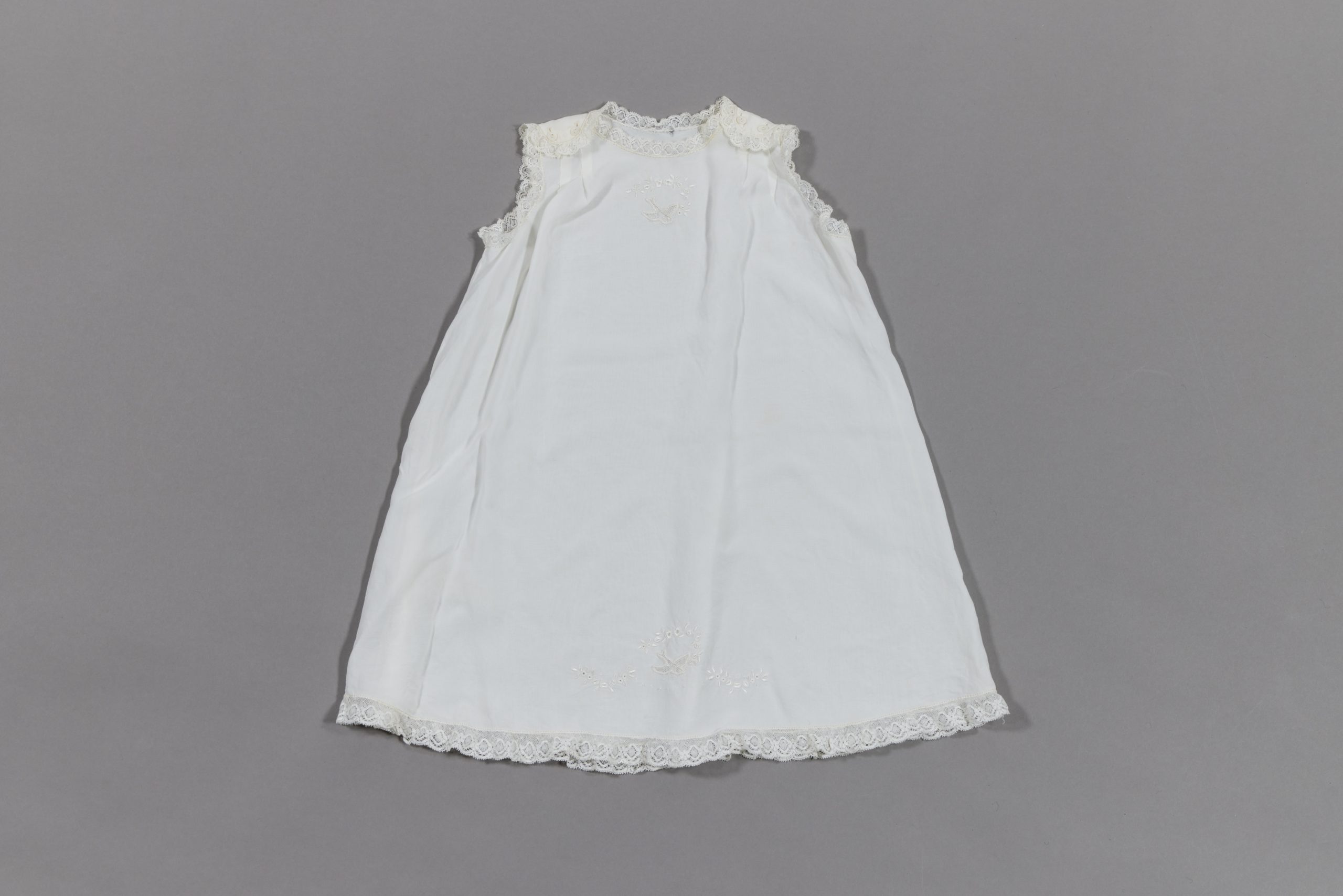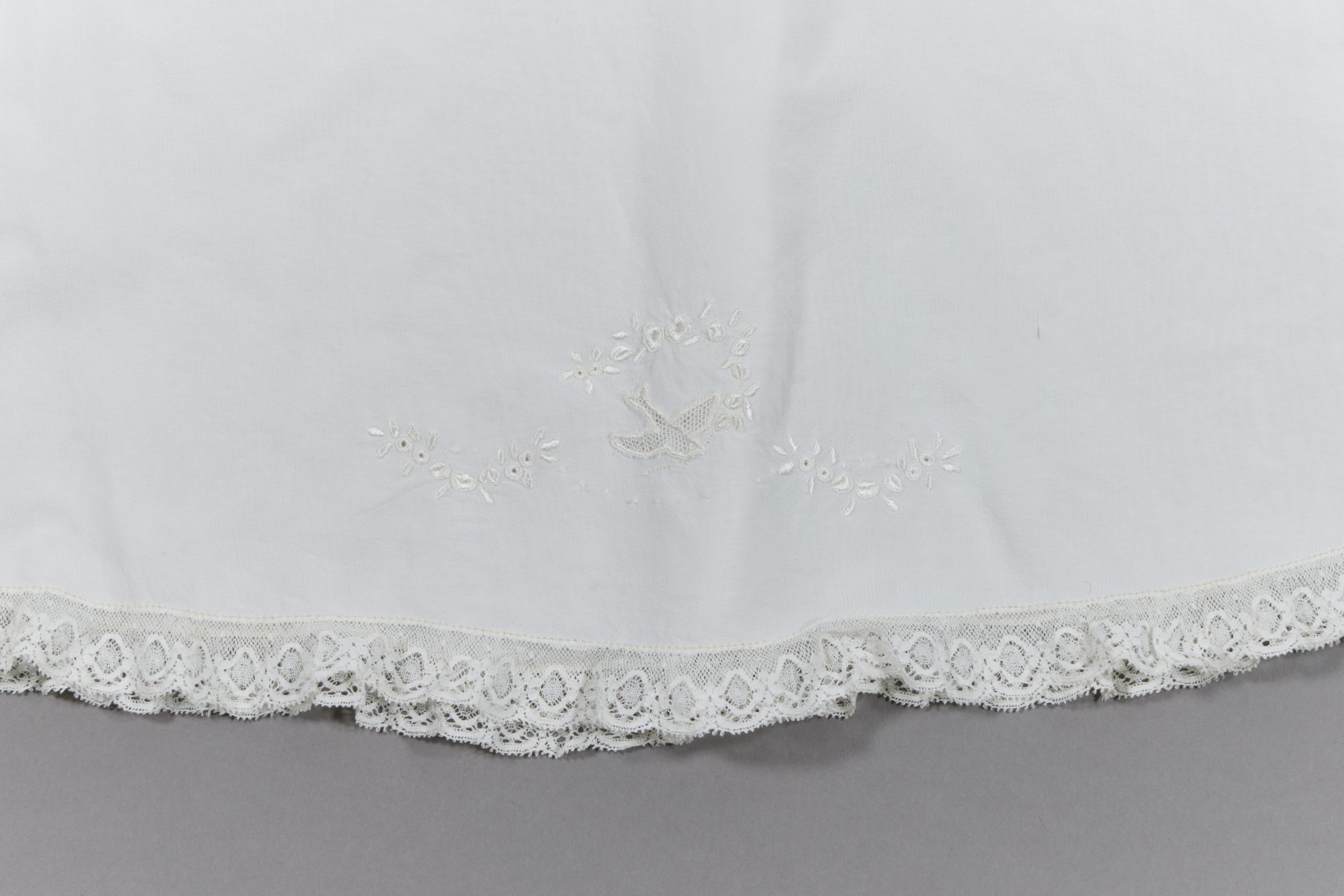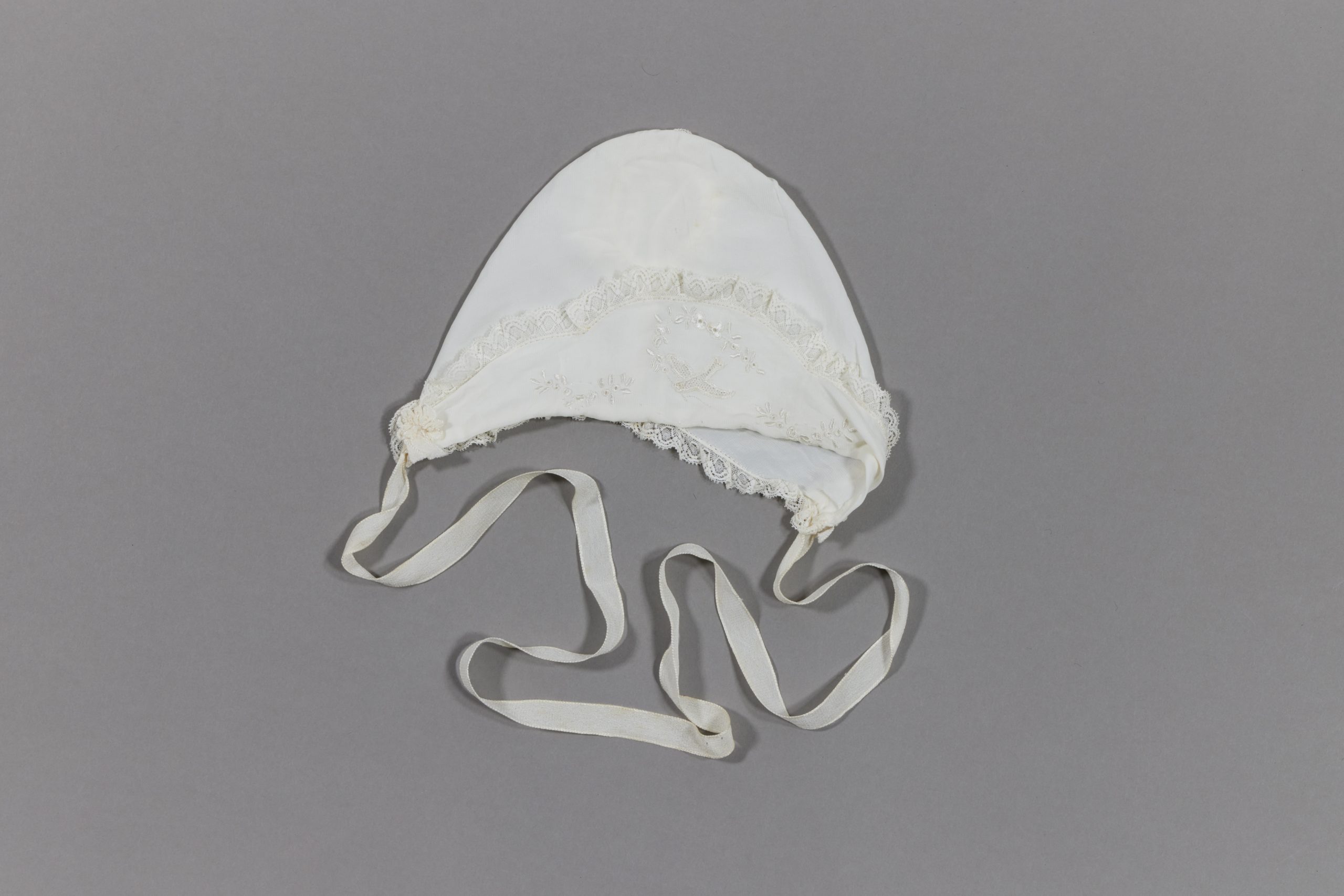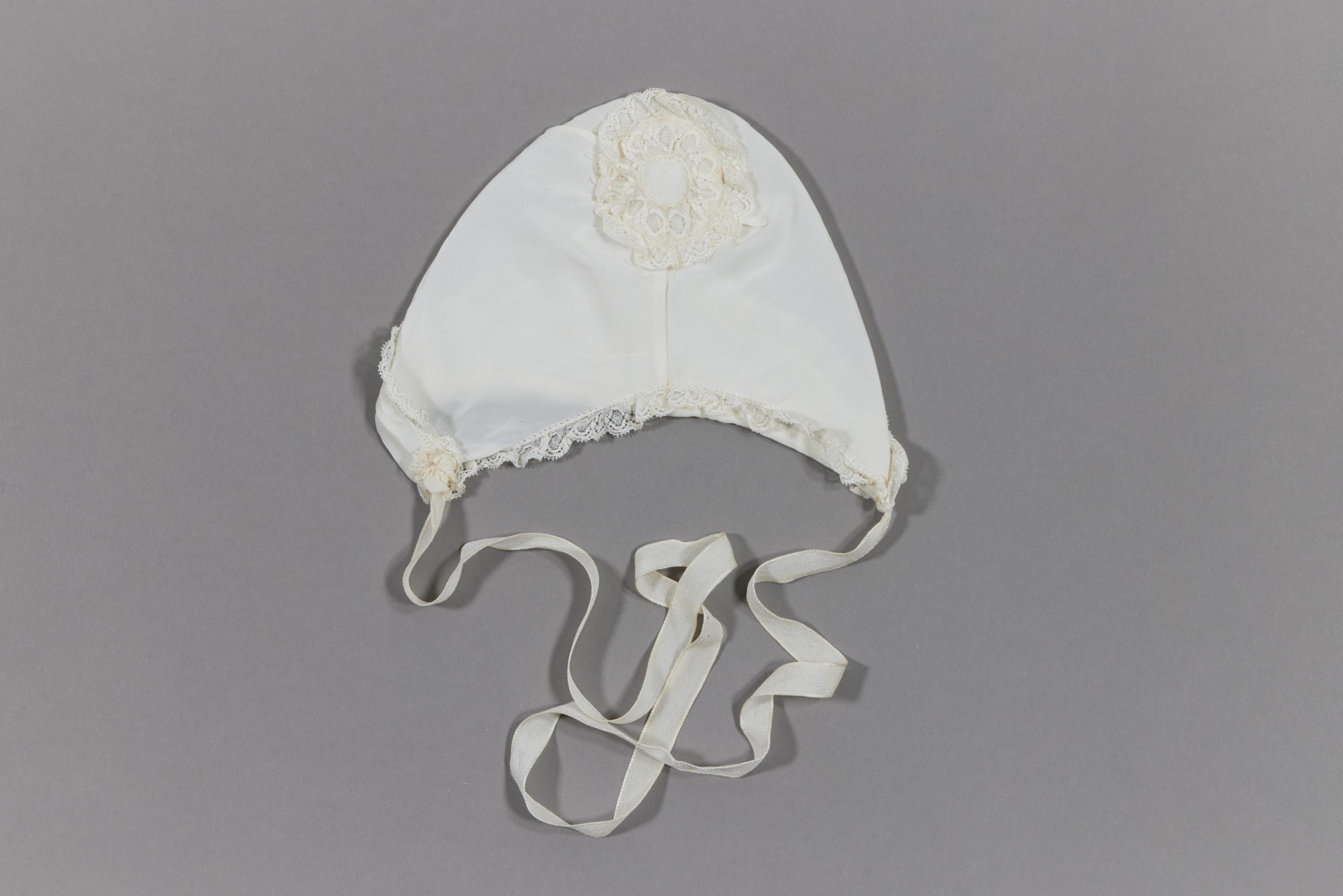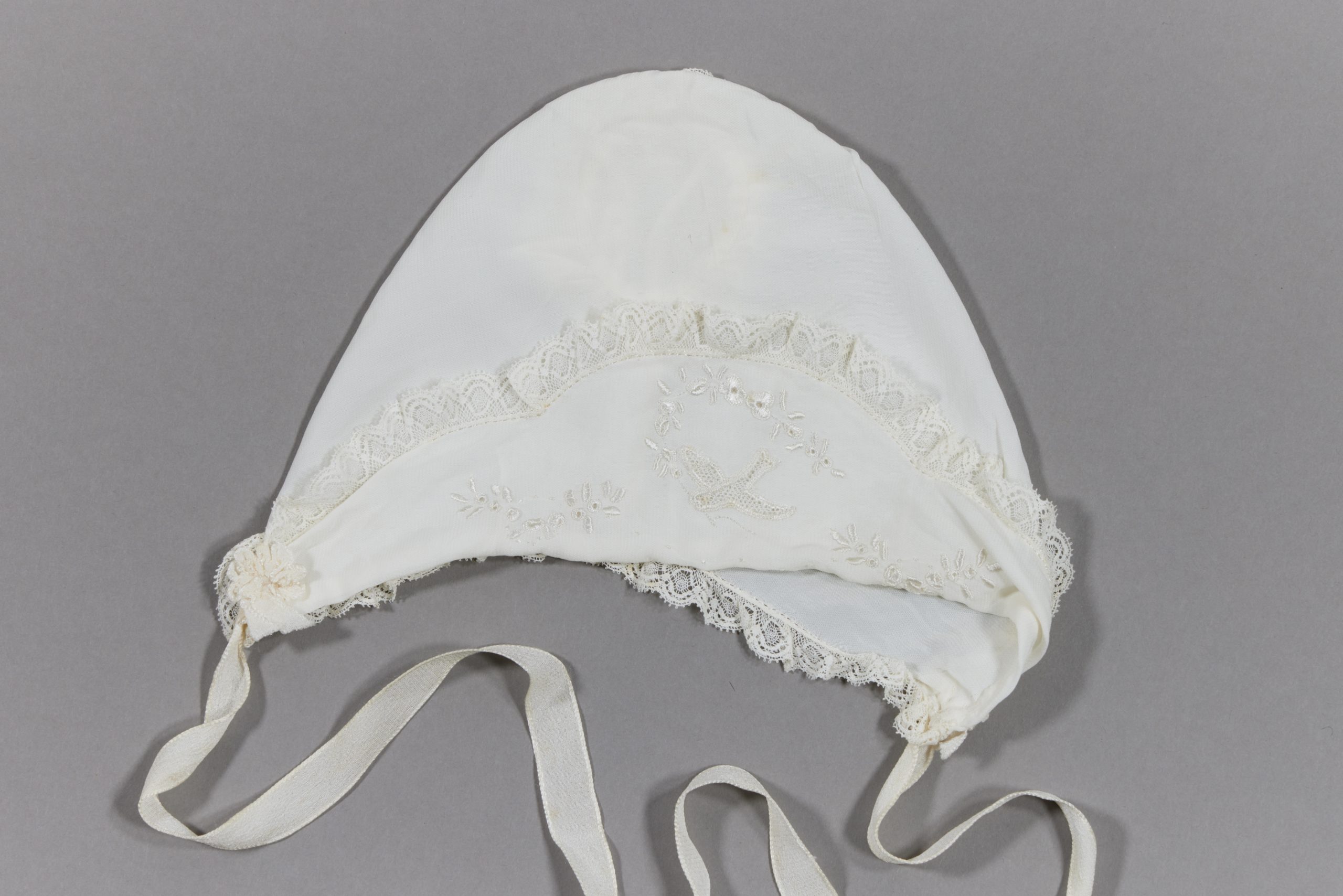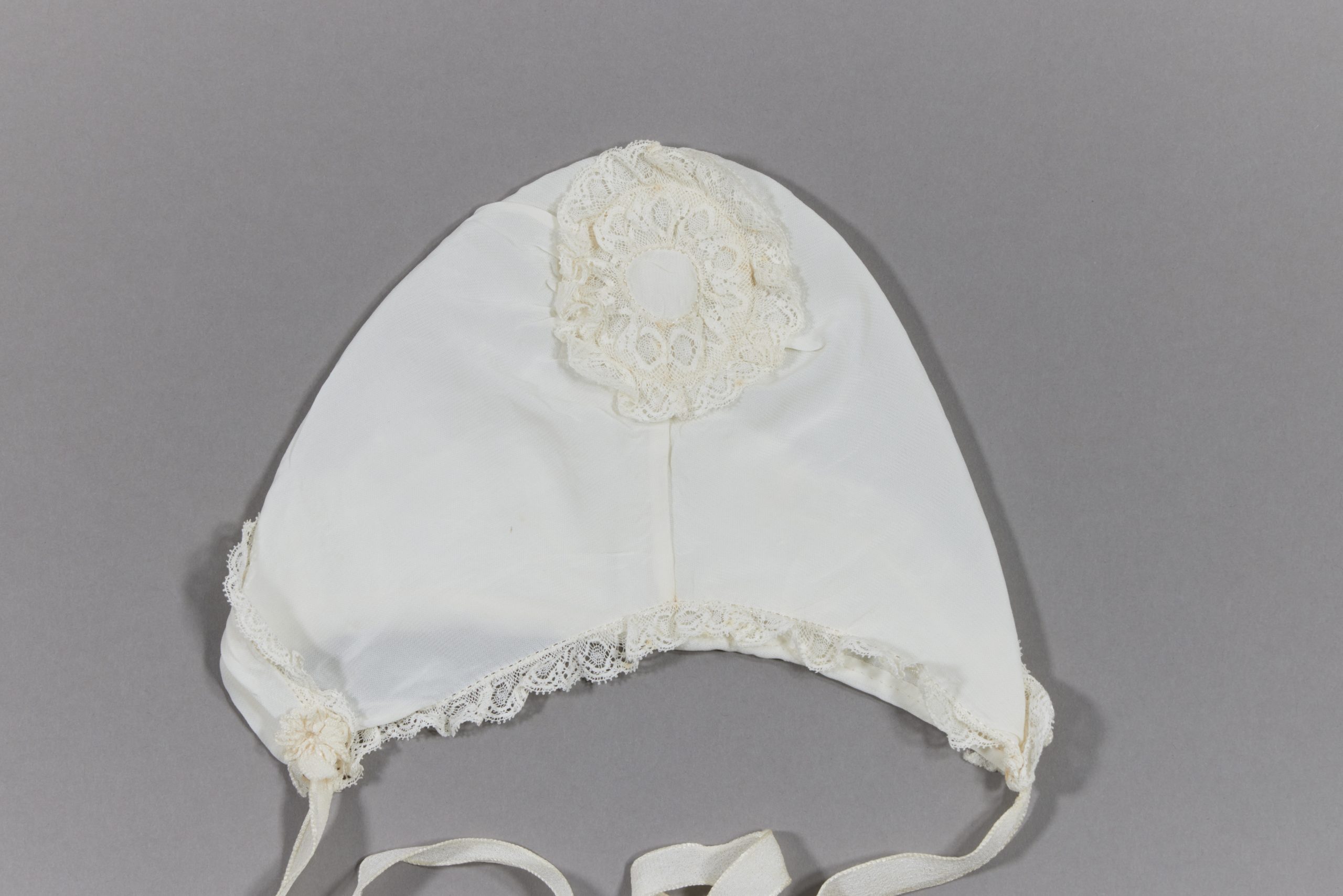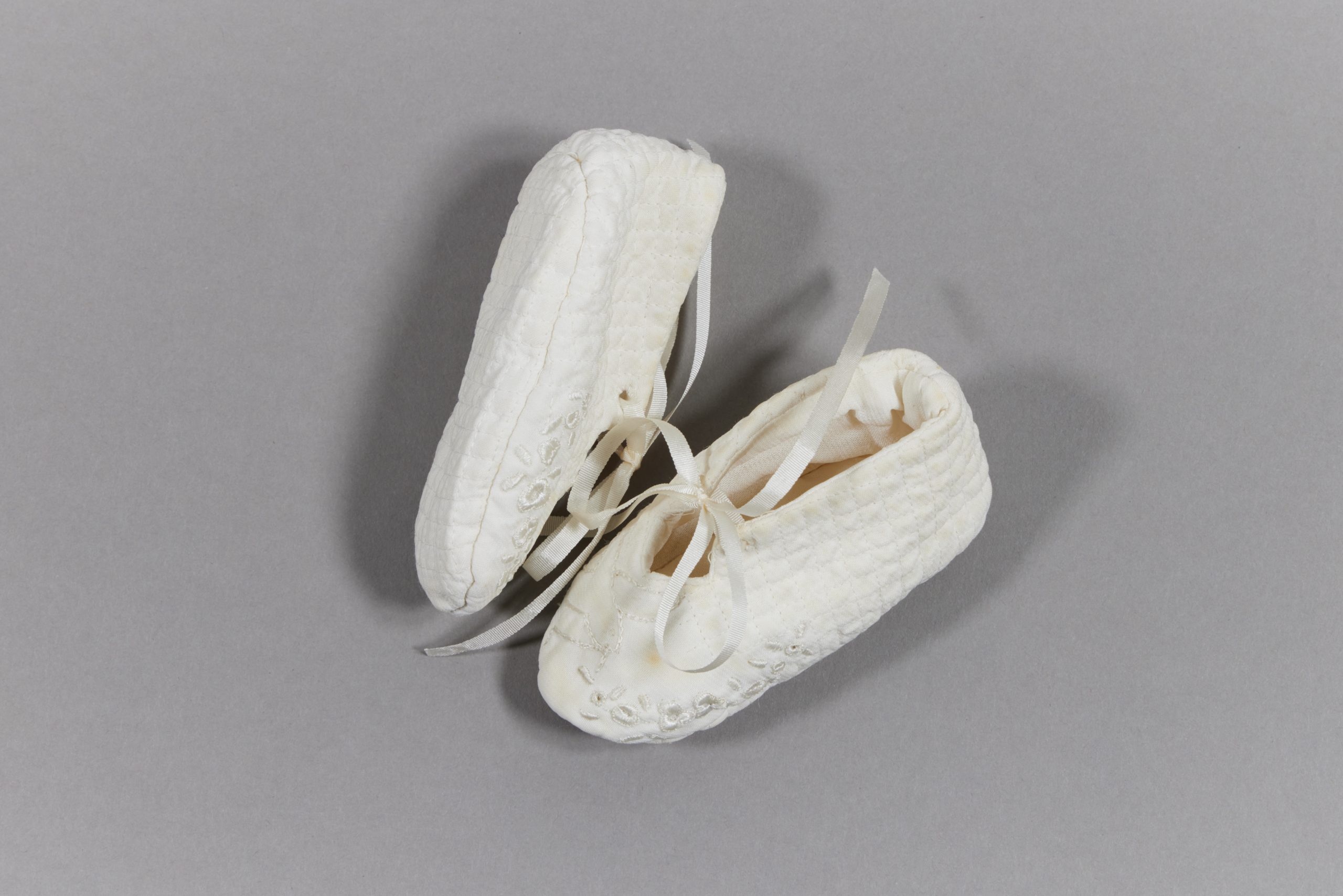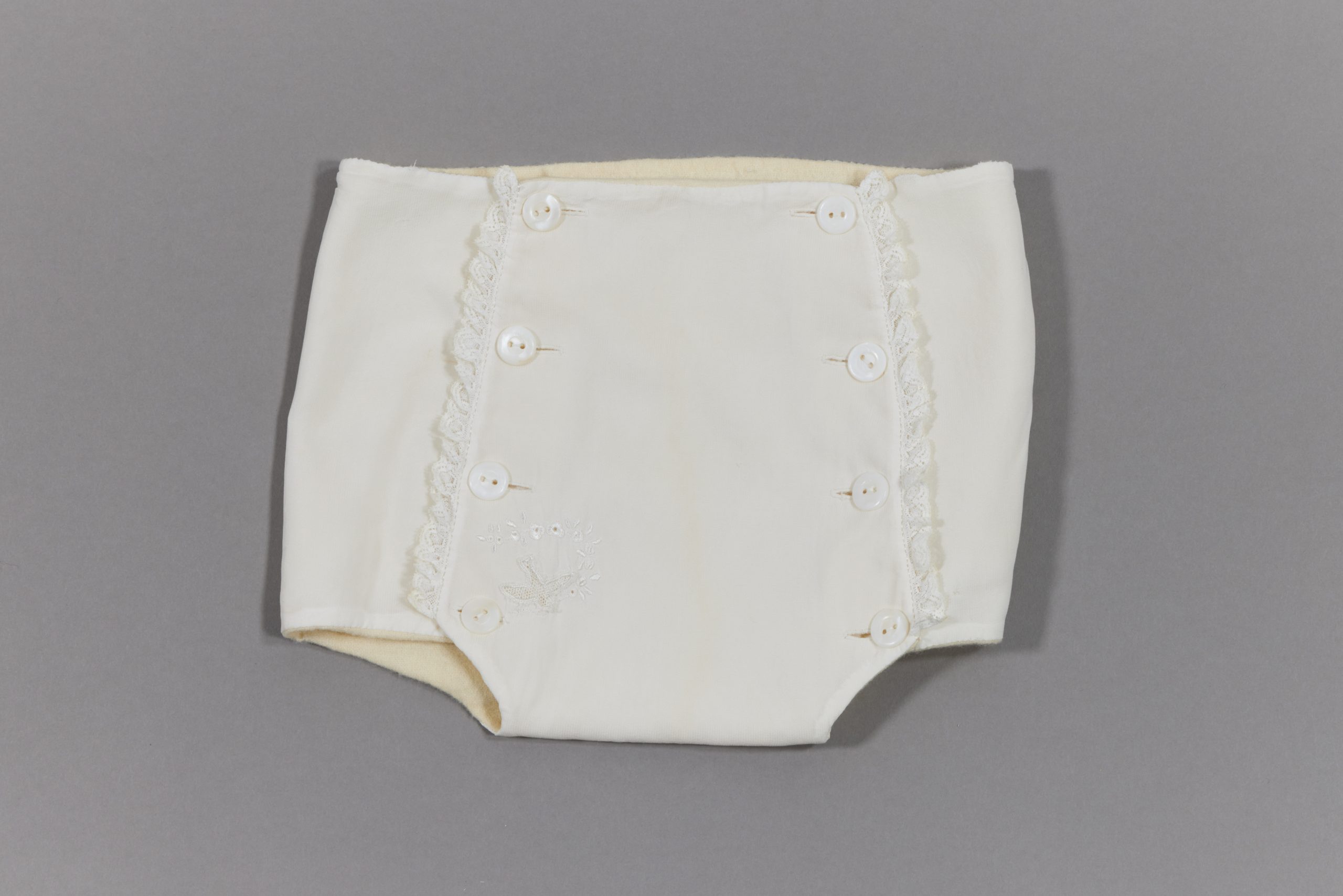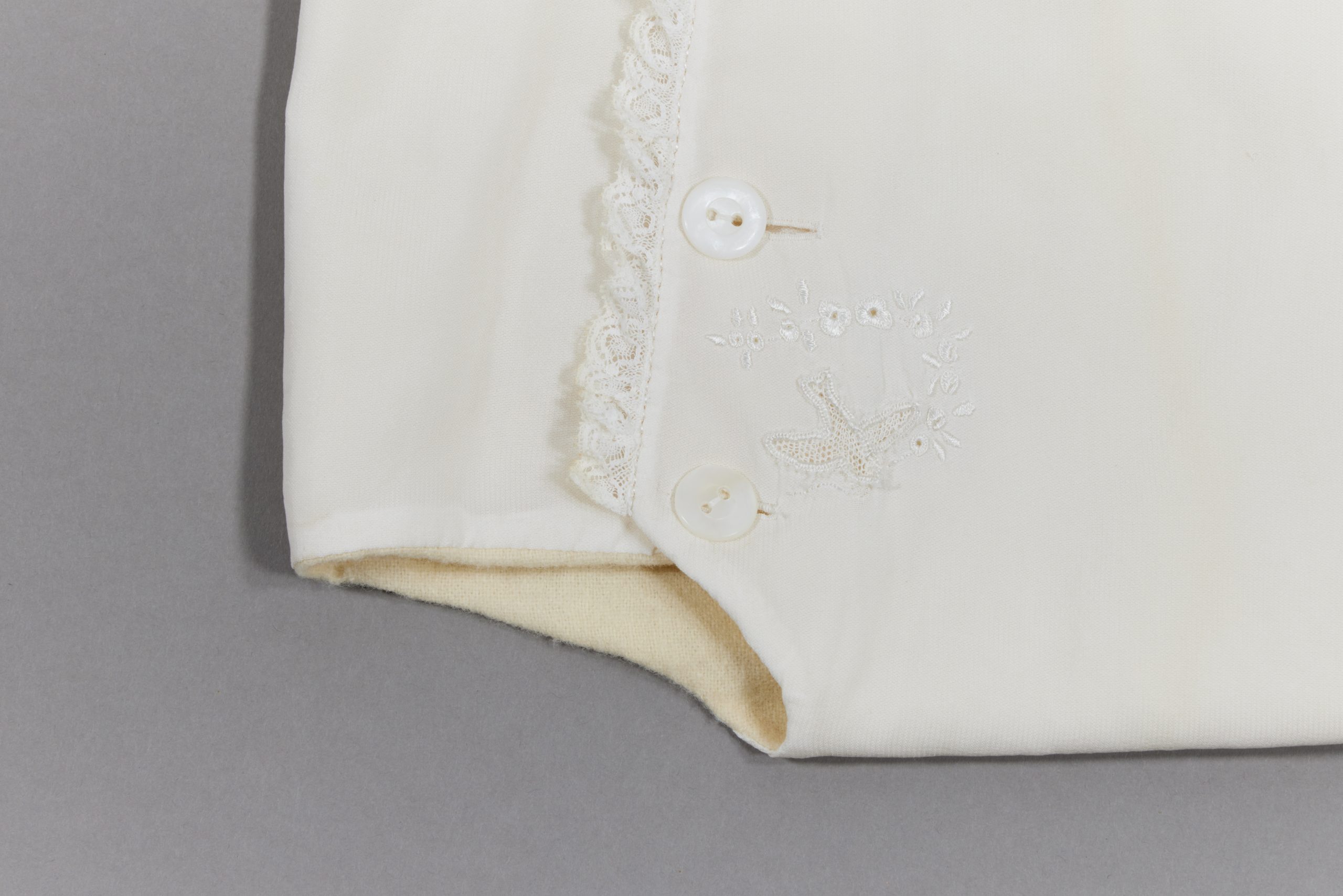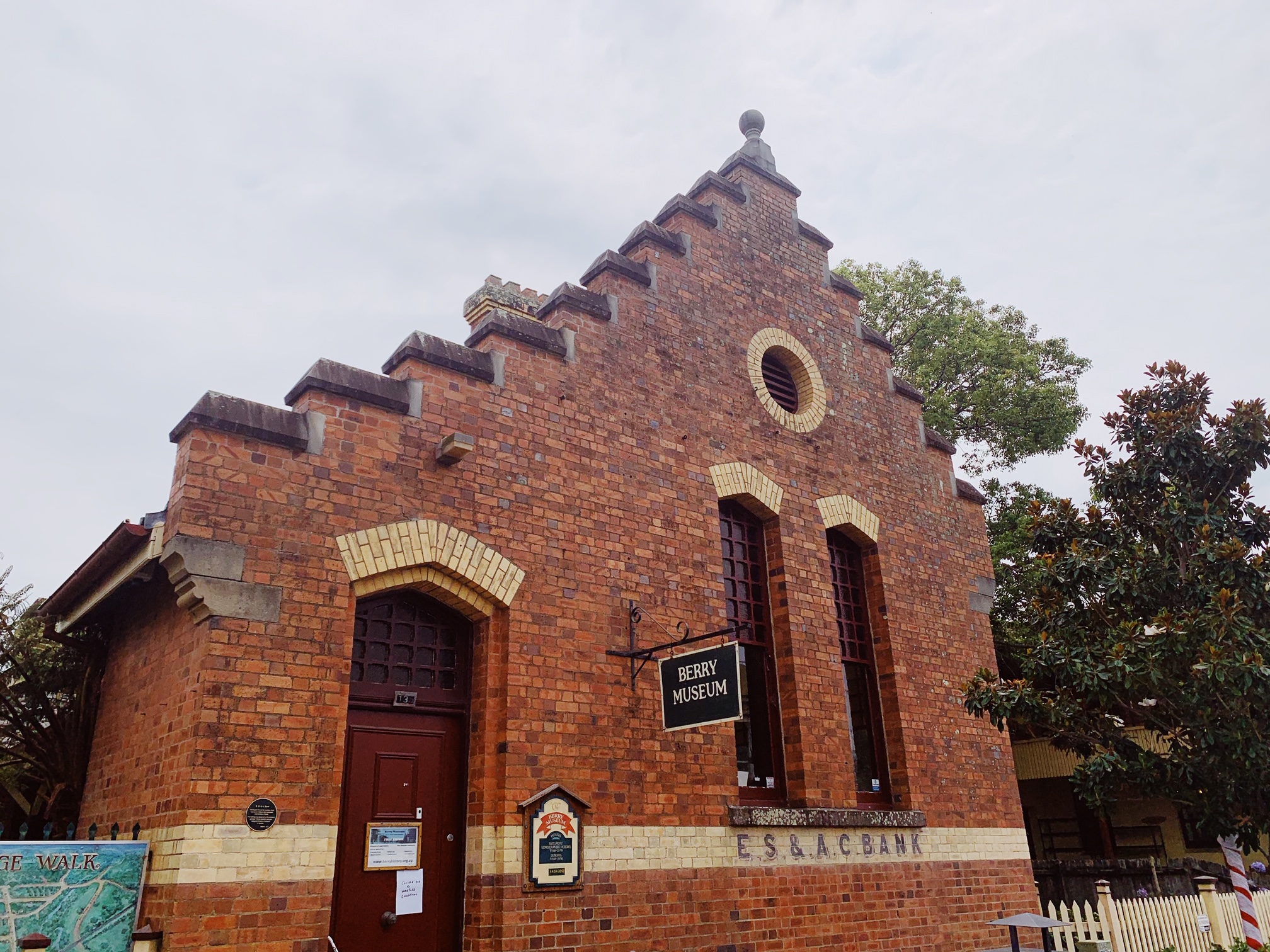The Lost Art of Whitework
A Fancy Baby Layette by Berry’s Gwen Pulsford
Parents of newborn babies today know that zipper onesies are very practical, especially those in bold colours and printed patterns that hide the inevitable spills and stains. But spare a thought for previous generations, when it was expected that babies be dressed in multiple fancy garments like those in this layette set, which were traditionally only made from white fabric. Babies looked suitably angelic, but how long before the white fabric was stained?
A set of baby clothes and bedding, known as a layette, was a popular gift for a newborn baby from the mid-nineteenth century through to the mid-twentieth century, and often included sleepwear, cardigans, dresses, blankets, towels, wash cloths, booties, and hats. As a baby’s best set of clothing, the pieces of a layette were often adorned with frills, lace, smocking and, like this example, whitework embroidery – a centuries-old tradition of stitching embroidery on a white foundation fabric.
This expertly made set was handstitched by talented needleworker Gwen Mobberley in 1951, when she was just 16 years old. While attending the Gardeners Road Home Economics School in Mascot, Sydney, Gwen won one of only six scholarships to study sewing at the East Sydney Technical College. There, she learned millinery, dressmaking and whitework and she completed this layette in her second year. Gwen remembers sitting up until the early hours of the morning on many occasions, perfecting its fine embroidery and hand-sewn French seams.
After graduating, Gwen was employed by the Department of Education from 1956 as a women’s handicraft teacher, at the Nowra Technical College, Gerringong School of Arts and Berry School of Arts. After marrying local dairy farmer Bill Pulsford in 1959, Gwen gave up teaching to work on the family farm and raise their three children. Perhaps one or all of her infants wore pieces of the layette, but the pristine condition of the clothing suggests that they may have never been worn.
Now that baby clothing is mass produced and inexpensive, Gwen’s skill in making such time-consuming, elaborately decorated garments is a lost artform.


